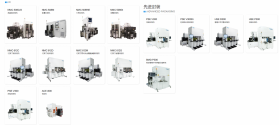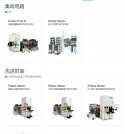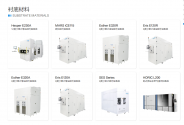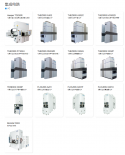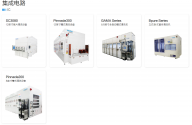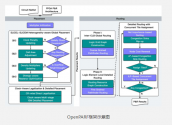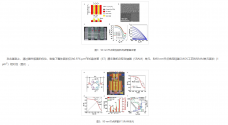Naura updated their Chinese website adding their new solutions for bevel, compound semiconductor, TSV and their new deposition tools.
This company is a semiconductor powerhouse.
Plasma etching equipment
Plasma dry etching technology is a technology that uses plasma for thin film microfabrication. Due to its good anisotropy and process controllability, it has been widely used in the field of semiconductor basic product manufacturing.
Relying on the accumulation and innovation in plasma control, reaction chamber design, etching process technology, and software technology, NAURA can provide Advanced equipment and process solutions. North Huachuang has now formed a full coverage of the etching process, and has the ability to etch various materials such as silicon, deep silicon, metal, dielectric, compound semiconductor (SiC, GaN, GaAs, InP, LiNb O₃ , LiTa O₃ , etc. ) Ability, with excellent process performance to become the customer's first choice.
View attachment 116661
Physical Vapor Deposition Equipment
Magnetron sputtering technology is a kind of PVD (Physical Vapor Deposition) technology, and it is one of the important methods for preparing thin film materials. It uses the characteristic that charged particles have a certain kinetic energy after being accelerated in an electric field, and guides the ions to the target electrode (cathode) made of the sputtered material, and sputters the target atoms along a certain direction. The direction moves to the substrate and the method of depositing the film on the substrate. Magnetron sputtering equipment makes the coating thickness and uniformity controllable, and the prepared film has good compactness, strong adhesion and high purity. This technology has become an important means of preparing various functional films.
Through continuous breakthroughs in many key technologies including sputtering source design, plasma generation and control, particle control, chamber design and simulation, software control, etc., NAURA has established core technological advantages, and equipment applications span multiple The technology generation represents the higher level of domestic integrated circuit thin film preparation process equipment. In addition, NAURA's PVD equipment technology has also been extended to advanced packaging, semiconductor lighting and other fields, and a variety of PVD products have achieved industrial applications.
View attachment 116662
Chemical Vapor Deposition Equipment
Chemical vapor deposition (CVD) technology is the main technology used to prepare high-purity, high-performance solid films. A typical CVD process is a method in which one or more vapor source atoms or molecules are introduced into the chamber, and a chemical reaction occurs under the action of external energy to form a desired film on the substrate surface. Because CVD technology has the advantages of wide film forming range and good reproducibility, it is widely used in various forms of film forming.
With more than 20 years of experience in the research and development of process equipment in the field of basic semiconductor products, NAURA is committed to providing various types of CVD equipment for integrated circuits, semiconductor lighting, micro-electromechanical systems, power semiconductors, compound semiconductors, new energy photovoltaics, and other fields. To meet the various manufacturing process needs of customers. The horizontal PECVD independently developed by NAURA has successfully entered the overseas market, providing solutions for many international advanced photovoltaic manufacturers. Silicon epitaxial equipment has made major breakthroughs in induction heating high temperature control technology, airflow field, temperature field simulation technology, etc., achieved excellent epitaxial process results, and obtained batch purchases from many domestic mainstream production lines. PECVD equipment for dielectric film deposition in the LED field has become the preferred equipment for LED customers to expand production by virtue of its excellent process performance and production capacity advantages. For the field of compound semiconductors, various technical indicators of silicon carbide epitaxy equipment have reached the advanced level in the industry, and batch machines have achieved stable mass production in major mainstream manufacturers.
View attachment 116664
Oxidation Diffusion Equipment
Oxidation is a process in which a silicon wafer is placed in an atmosphere of an oxidizing agent such as oxygen or water vapor for high-temperature heat treatment, and a chemical reaction occurs on the surface of the silicon wafer to form an oxide film. It is one of the most widely used basic processes in integrated circuit technology. The oxide film has a wide range of uses, and can be used as a barrier layer for ion implantation and an implantation penetration layer (damage buffer layer), surface passivation, insulating gate material, device protection layer, isolation layer, and dielectric layer for device structures. Diffusion is the use of thermal diffusion principle to dope impurity elements into the silicon substrate according to the process requirements under high temperature conditions, so that it has a specific concentration distribution, so as to change the electrical properties of the material and form the semiconductor device structure. In the process of silicon integrated circuits, the diffusion process is used to make PN junctions or to form devices such as resistors, capacitors, interconnect wiring, diodes and transistors in integrated circuits.
Annealing (Anneal) is also called thermal annealing. In the integrated circuit process, all heat treatment processes in inert gases such as nitrogen can be called annealing. Its main function is to eliminate lattice defects and eliminate lattice damage in silicon structures. In addition, in order to form a good foundation on the surface of the silicon wafer, stabilize the crystal structure of the Cu wiring and remove impurities, thereby improving the reliability of the wiring, it is usually necessary to place the silicon wafer in an environment of an inert gas such as argon for low-temperature heat treatment , this process is called alloy (Alloy).
The above processes are widely used in semiconductor integrated circuits, advanced packaging, power electronics (IGBT), micro-electromechanical (MEMS), photovoltaic cell (Photovoltaic) manufacturing and other application fields. The vertical furnace and horizontal furnace equipment of North Huachuang have reached The advanced level of domestic semiconductor equipment, its technical indicators and process performance are outstanding, and it is committed to providing customers with forward-looking and leading product technologies and solutions.
View attachment 116666
wet equipment
The wet process is mainly used to remove ultra-fine particle pollutants, metal residues, and organic residues left over from the previous process in chip manufacturing, and to remove photoresist masks or residues. Silicon oxide film, silicon nitride, or Wet etching of thin film materials such as metals prepares good surface conditions for the next step. Cleaning is generally achieved by a combination of chemical and physical forces. During cleaning, it must have good corrosion selectivity, the ability to efficiently remove ultra-fine particles and various residues, and not affect the fine pattern structure of the wafer surface. cause damage. Wet etching rate, etching uniformity, control of cross-contamination on the front and back sides of the wafer, and cleaning efficiency are all critical process elements.
NAURA can provide various types of single-chip cleaning equipment and tank cleaning equipment, which have been widely used in the fields of integrated circuits, semiconductor lighting, advanced packaging, micro-electromechanical systems, power electronics, compounds and power devices.
View attachment 116667

